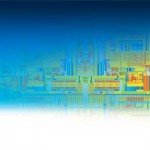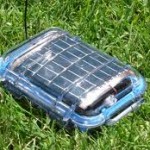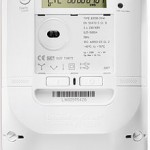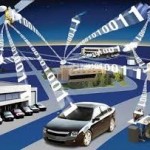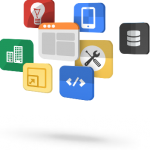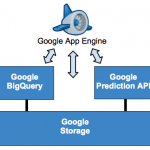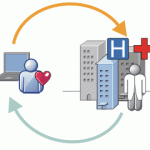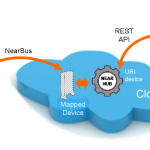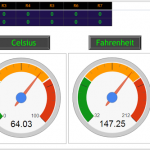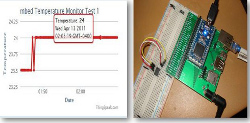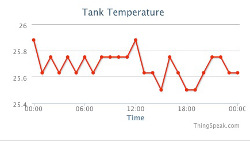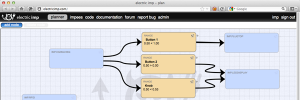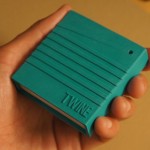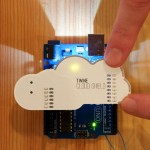Recently an increasing number of networked devices are finding their way into consumer, industrial and medical applications. Such networks often employ distributed nodes which cannot practically be connected to the power grid – through design or through necessity. Therefore powering such devices can possibly be a challenge – due to the costs of either running from battery or solar power, sending technicians for maintenance visits to replace batteries – or having to install one’s own power network for the IoT system.
This is where energy efficiency is key – by using highly energy-efficient design practices in both the hardware and software levels, the power requirements can usually be reduced significantly. In doing so the power supply paradigm can be altered to one of lower cost and higher efficiency. Especially for remote or portable devices that use RF/microcontroller chipsets – the smaller the power requirement the better.
High-power and efficient wireless network nodes can be engineered using modern RF microcontroller system-on-chip devices, activating sensors and peripheral hardware devices only when they are required, and then putting them into low-power sleep modes when not in use. Similarly, the RF transceiver can be switched into a very-low-power sleep state until the microcontroller decides that a transmission of collected sensor data is required. The microcontroller can then wake up the radio, perform the required transmission, and then revert to sleep mode.
In some cases, a burst of data transmission across the wireless network might only occur when a small, intermittent energy-harvesting power supply has accumulated enough energy in a capacitor to power a transmission. Alternatively, a low-power wireless sensor node can “wake-on-radio”, only taking the microcontroller out of its sleep state when a message is received over the wireless network requesting a sensor readout and only powering up the sensors and microcontroller at this time.
With most of the components of the system, such as the microcontroller, radio and sensors – each kept off-line or asleep for the largest practical amount of time – efficiently designed wireless sensor nodes may achieve operating timescales as long as years off a single battery. Today’s typical wireless RF microcontroller system-on-chips targeted at IoT applications typically consume about 1-5 microwatts in their “sleep” state, increasing to about 0.5-1.0 mW when the microcontroller is active, and up to around 50 mW peak for brief periods of active RF transmission.
However when considering the design of energy-efficient, low-power IoT sensor networks, it can sometimes be advantageous to think not just in terms of power consumption, but in terms of the amount of energy required to perform a particular operation. For example, let’s suppose that waking up a MEMS accelerometer from sleep, performing an acceleration measurement and then going back to sleep consumes, say, 50 micro joules of energy; or that waking up an RF transceiver from sleep, transmitting a burst of 100 bytes of data and then going back to sleep consumes 500 micro joules.
If we know the specific energy consumption of each operation, then the average power consumption is simply the energy per operation multiplied by the frequency of that operation, summed over the different kinds of operations. Of course, this assumes that the continuous power consumption of each device when it is asleep is very small and can be ignored. Alternatively, if we have a certain known power budget available and a known energy budget for each sensing, computation or transmission operation – we then know the maximum practical frequency at which a sensor node can perform sensor measurements and transmit its data.
Additionally, efficient wireless sensor nodes can take advantage of some form of energy harvesting power supply – employing energy sources such as solar cells, vibrational energy harvesters or thermoelectric generators to minimise maintenance and extend battery life – with the possibility of completely eliminating external power supplies, but only if the power consumption of the system is small enough and a capacitor is employed for energy storage.
In many applications, solar cells are the most familiar and relatively mature choice for low-power network nodes operating outdoors or under good indoor light conditions. However, other technologies suitable for extracting small amounts of power from the ambient environment exist. For example, a wireless sensor node set up to monitor bearing wear in a generator could employ a piezoelectric crystal as a vibrational energy harvester, converting motor vibration into usable energy, or a thermoelectric generator mounted on a hot exhaust could harvest a small amount of otherwise wasted energy from the thermal gradient.
Typical vibrational energy harvesters usually operate with a cantilever of piezoelectric material that is clamped at one end and tuned to resonate at the frequency of the vibration source for optimal efficiency – although an electromagnetic transducer can be used in some cases. Whilst the electrical power available is dependent on the frequency and intensity of the vibrations, the cantilever tip mass and resonant frequency can generally be adjusted to match the machinery or system that energy is to be harvested from.
Furthermore, energy harvesting management ICs that manage the accumulation of energy in a capacitor over a period of time can enable short bursts of relatively high power consumption, such as when a node wakes up and transmits a burst of data, and are particularly well suited to low-power wireless sensor nodes.
Even with the examples mentioned above, the energy-efficiency possibilities are significant and can be a reality. When designing prototypes or proof-of-concept demonstrations you may put energy use to one side, however when it comes time to generate a real, final product – you can only benefit from taking energy-efficiency into account.
If you are considering creating or modifying existing designs and not sure about the energy-saving and generating options that are available, be efficient and discuss your needs with an organisation that has the knowledge, experience and resources to make your design requirements a reality such as here at the LX Group.
At the LX Group we have a wealth of experience and expertise in the embedded hardware field, and can work with the new and existing standards both in hardware and software to solve your problems. Our goal is to find and implement the best system for our customers, and this is where the LX Group can partner with you for your success.
We can create or tailor just about anything from a wireless temperature sensor to a complete Internet-enabled system for you – within your required time-frame and your budget. For more information or a confidential discussion about your ideas and how we can help bring them to life – click here to contact us, or telephone 1800 810 124.
LX is an award-winning electronics design company based in Sydney, Australia. LX services include full turnkey design, electronics, hardware, software and firmware design. LX specialises in embedded systems and wireless technologies design. https://lx-group.com.au
Published by LX Pty Ltd for itself and the LX Group of companies, including LX Design House, LX Solutions and LX Consulting, LX Innovations.

